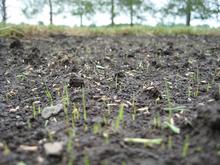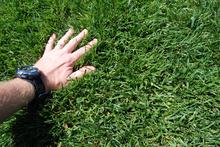How much nitrogen fertilizer do fine fescues need during establishment?
By Ross Braun and Aaron Patton, Purdue University
A team of scientists at Purdue University, Oregon State University, and University of Minnesota investigated establishment differences among the fine fescue taxa and at the same time investigated the influences of different levels of nitrogen fertilizer and including clover. The objectives were to investigate differences among fine fescue taxa and determine optimal N fertility or clover-inclusion programs for fine fescue taxa during establishment for future low-input sites.



